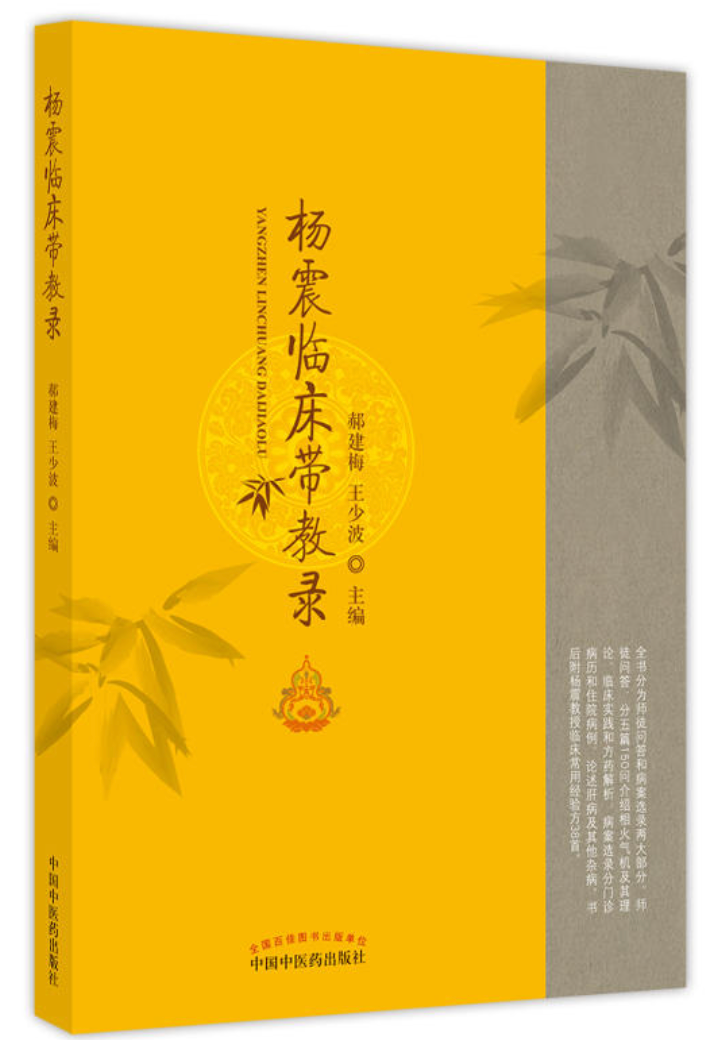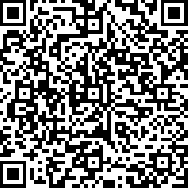Editor’s Note
Pulse diagnosis is a distinctive feature of Traditional Chinese Medicine (TCM), reflecting many aspects of a patient’s physical and mental condition. However, learning pulse diagnosis is not an easy task, as similar pulse patterns can often lead to confusion. Professor Yang Zhen, a renowned expert in liver diseases, has many insights into pulse diagnosis and differentiation of pulse patterns in liver conditions. Let us learn together.

Pulse Patterns in Liver Diseases
Pulse diagnosis is a major feature of TCM, allowing practitioners to understand the syndrome attributes, severity, and prognosis of diseases. The “Su Wen: On the Correspondence of Yin and Yang” states that “A good diagnostician observes color and feels the pulse, first distinguishing between Yin and Yang”, highlighting the importance of pulse diagnosis. It is often said that “To treat a disease, one must seek its root”, and the pulse often reflects the essence of the disease.
Patients with liver diseases commonly exhibit pulse patterns such as xian mai (string-like pulse), shuo mai (rapid pulse), zhi mai (stagnant pulse), se mai (rough pulse), chen mai (deep pulse), ge mai (leather-like pulse), ruo mai (weak pulse), and xi mai (fine pulse). However, patients often do not present a single pulse pattern but rather a combination of pulses, such as chen xian mai (deep string-like pulse), chen xi mai (deep fine pulse), chen xian se mai (deep string-rough pulse), chen xi shuo mai (deep rapid fine pulse), and xi shuo mai (fine rapid pulse). In the early stages of liver disease, where the righteous and evil forces are in conflict, one may observe chen xian er you li (deep string pulse that is strong) or xian zhi (string stagnation); if the disease has progressed for a long time, with Qi and blood deficiency leading to weak pulsation, one may find chen xi wu li (deep fine pulse that is weak); in chronic liver disease, where Yin and blood are insufficient, the pulse may become chen xian se (deep string-rough pulse); or if the disease has long consumed essence and blood, leading to essence deficiency and blood loss, one may find chen xian xi se (deep string-fine-rough pulse); if the disease has persisted, causing stagnation heat damaging Yin, one may observe xi shuo (fine rapid pulse).

Additionally, pulse patterns can also reflect or supplement the pathogenesis beyond the symptoms of liver disease. For example, patients with liver disease often have liver Qi stagnation, leading to Qi obstruction, which is reflected in jin mai (tight pulse) and xian mai (string-like pulse). If the patient primarily presents with rib pain and significant distension, the pulse should be predominantly xian (string-like); if the pulse shows both se zhi (rough stagnation pulse) and xian (string-like), it suggests a long-standing condition with blood stasis obstructing the meridians, indicating the need to promote Qi and soothe the liver while also using blood-activating and meridian-opening herbs; if the liver disease has persisted, causing Yin damage and internal heat, one would expect to see xi shuo (fine rapid pulse); if a xi ruo mai (fine weak pulse) is observed, it indicates that the person has insufficient Ying and blood, and the pulse channels cannot be filled, thus treatment should focus on tonifying Qi, nourishing Yin, and replenishing Qi and blood.
The “Jing Yue Quan Shu: Chapter on Pulse” states: “The pulse is the spirit of blood and Qi, a reflection of the balance between evil and righteousness. What is within must manifest without; thus, when blood and Qi are abundant, the pulse must be strong; when blood and Qi are deficient, the pulse must be weak; a healthy person has a regular pulse, while a sick person has an irregular pulse.”Changes in the pulse can reflect the state of the patient’s organs, the amount of Qi and blood, the progression of the disease, and the strength of evil and righteousness.

Pulse patterns correspond with the four seasons. The “Su Wen: On the True Organs” mentions that “In spring, the pulse is like a string… in summer, it is like a hook… in autumn, it is like floating… in winter, it is like nourishing”. Additionally, the slow pulse of late summer is considered a normal pulse pattern reflecting seasonal climatic changes, also known as “Four Seasons and Five Organs Normal Pulse”. If the pulse corresponds to the four seasons, it indicates no disease; conversely, if it does not, it indicates illness, as stated: “If the pulse follows the four seasons, it is treatable… if the pulse is contrary to the four seasons, it is untreatable.”
Under normal circumstances, the cun pulse and guan pulse should be prominent, while the chi pulse should be hidden within; if the chi pulse is externally prominent, it often indicates kidney Qi deficiency. When external pathogens are present, the pulse is often floating; Qi and blood deficiency typically present as string-like and fine; a strong pulse indicates fullness, while a weak pulse indicates emptiness. Such situations are numerous and provide indispensable diagnostic and treatment basis in clinical practice.

Distinguishing Between Ge Mai (Leather-like Pulse) and Kuo Mai (Hollow Pulse)
Kuo mai and ge mai have similarities. Kuo, in its literal sense, refers to a type of scallion, also implying hollow in the middle; while ge refers to leather, implying armor.
Kuo mai is described as floating, large, and hollow in the middle, with soft edges, like pressing on a scallion; ge mai can be described as floating, taking a firm grip, hollow in the middle with hard edges, like pressing on a drum skin. These descriptions vividly illustrate that both have a floating and hollow quality, but kuo mai has soft edges, while ge mai has hard edges.
Kuo mai is floating, large, and weak; ge mai is a combination of string and hollow pulses, floating, large, and strong, with a sense of urgency, suddenly feeling empty when pressed.
Kuo mai represents a condition of solitary Yang losing Yin, resulting from blood loss, essence loss, or damage to Yin fluids, leading to a hollow pulse; Qi loses its attachment and escapes outward, with symptoms such as low fever, dizziness, palpitations, sweating, blood loss, and essence loss. Zhang Jingyue noted: “Kuo mai is a sign of solitary Yang losing Yin, with blood loss leading to Qi having nowhere to return, resulting in Yang having no attachment… it is fundamentally a condition of great emptiness.”
On the other hand, ge mai forms in individuals with pre-existing essence and blood deficiency who then encounter cold pathogens, causing the exterior to tighten, the pulse vessels to constrict, leading to a floating and tight pulse; it can also occur after blood loss and essence loss, where cold arises internally, Yin cannot contain Yang, and solitary Yang is forced outward by cold, resulting in ge mai; elderly individuals with stroke may also present ge mai due to both arteriosclerosis and Yin deficiency. Therefore, ge mai primarily indicates a deficiency of essence and blood with new external cold pathogens; it also indicates blood loss and essence loss, with Yin deficiency failing to contain Yang, leading to solitary Yang floating outward.

Exploring Xian Mai (String-like Pulse) and Hua Mai (Slippery Pulse)
Xian mai refers to a pulse that is straight and long, resembling a string. The “Bin Hu Pulse Studies” describes it as “Xian mai is long and straight, the liver channel corresponds to wood, which is affected by injury. Anger fills the chest, often wanting to shout, with tears flowing from the eyes.” In spring, the pulse is string-like, as the liver wood corresponds to spring Qi, thus the liver pulse is also string-like; a soft string pulse is a normal pulse pattern. An excessive or insufficient string pulse in spring indicates liver disease. Mechanistically, in spring, Yang Qi rises while Yin Qi descends; thus, Yang Qi emerges from the midst of two Yin, and although Yang Qi rises, Yin Qi remains heavy, and the weather is still cold, hence the pulse appears string-like. The pulse vessels contract when encountering cold or pain, becoming straight and thin, which is the string-like pulse; if water or external pathogens obstruct the pulse vessels, a string-like pulse may also be observed.
Hua mai refers to a pulse that flows smoothly, like beads rolling on a plate, although it resembles a rapid pulse, the pulse rate is not fast. The “Bin Hu Pulse Studies” states: “Hua mai is like beads rolling smoothly, coming and going fluidly. Do not confuse hua with shuo; shuo mai is only observed in rapid intervals.” Hua mai belongs to Yang pulses, while se mai (rough pulse) belongs to Yin pulses. The “Nei Jing” states, “Hua indicates an excess of Yin,” referring to Yin pathogens obstructing Yang, such as phlegm, dampness, and blood stasis obstructing Yang Qi, leading to poor Qi flow, often indicating excess conditions, phlegm-heat, or food stagnation.
Clinical AttentionHua mai also has true hua and like hua distinctions: True hua indicates phlegm-heat, while like hua indicates essence deficiency. True hua pulse is characterized by real heat, with a pulse that is slippery, large, rapid, solid, and fast; like hua pulse is characterized by internal cold deficiency, with a pulse that is slippery, weak, empty, rapid, and string-like. Both should be assessed in conjunction with floating and sinking, distinguished by cun and chi, and correlated with tongue and symptoms to determine their cold-heat and deficiency-excess conditions.

Clinical Practice Records of TCM Experts

 “Yang Zhen’s Clinical Teaching Record” Click on the cover to enter the Yuyiyi Medical Bookstore to purchase this book Scan to read for free
“Yang Zhen’s Clinical Teaching Record” Click on the cover to enter the Yuyiyi Medical Bookstore to purchase this book Scan to read for free
This book is primarily reviewed by Professor Yang Zhen, the honorary director of Xi’an Traditional Chinese Medicine Hospital and a renowned TCM expert in Shaanxi Province. Inspired by the academic thoughts of Wang Xinwu, a successor of the Danxi School, and Ma Ruiting, a Qing Dynasty imperial physician, he integrates his clinical insights to propose practical theories such as “Theory of Fire Qi Mechanism,” “Six Types of Fire Qi,” and “Five Methods for Treating the Liver,” and summarizes “Ten Methods for Treating the Liver” for clinical application, yielding significant results. The book is divided into two main parts: teacher-student Q&A and selected case studies, with five sections totaling 150 questions, introducing the theory of fire Qi and its clinical practice and formula analysis; the selected case studies discuss Professor Yang’s experiences in treating liver diseases and other miscellaneous diseases, with 38 commonly used experience formulas attached at the end, hoping to inspire clinical doctors and TCM students.
❖This article is for knowledge sharing only and does not constitute a recommendation or promotion of any medication or treatment, nor can it replace professional medical advice. For any diagnostic or treatment needs, please consult and contact a legitimate medical institution.
Previous Recommendations
Three formulas for stopping cough from Zhang Zhongjing
Immersive learning of Chinese herbs, easily mastering the secrets of “Walking Chinese Herbal Encyclopedia”
Classic small formulas for activating blood and relieving pain
Copyright Statement
Some content of this article is selected from “Yang Zhen’s Clinical Teaching Record” (published by China Traditional Chinese Medicine Press, edited by Hao Jianmei and Wang Shaobo), with final interpretation rights belonging to the original author, recommended and published by Yue Du Zhong Yi (WeChat ID: ydzhongyi), cover and images in the article are sourced from Shetu Network, copyright belongs to the original author. If there is any infringement, please contact for deletion. Unauthorized reproduction is prohibited!
✦Editor:Li Wenbo, Lei Chang
✦Reviewer: Liu Zhe
✦Typesetting: Hu Jialin, Bai Jialu
✦For reprints, submissions, collaborations, and bulk book purchases: 17701086692 (WeChat ID)

